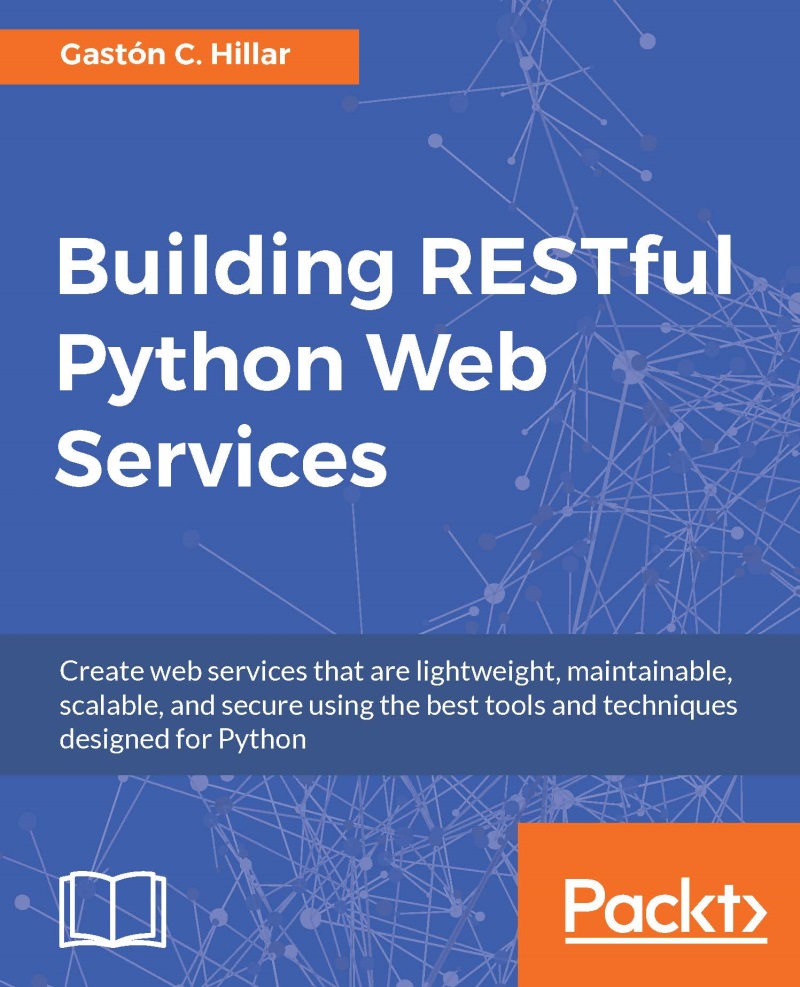-
Book Overview & Buying

-
Table Of Contents

Building RESTful Python Web Services
By :

Building RESTful Python Web Services
By:
Overview of this book
Python is the language of choice for millions of developers worldwide, due to its gentle learning curve as well as its vast applications in day-to-day programming. It serves the purpose of building great web services in the RESTful architecture. This book will show you the best tools you can use to build your own web services.
Learn how to develop RESTful APIs using the popular Python frameworks and all the necessary stacks with Python, Django, Flask, and Tornado, combined with related libraries and tools. We will dive deep into each of these frameworks to build various web services, and will provide use cases and best practices on when to use a particular framework to get the best results.
We will show you everything required to successfully develop RESTful APIs with the four frameworks such as request handling, URL mapping, serialization, validation, authentication, authorization, versioning, ORMs, databases, custom code for models and views, and asynchronous callbacks. At the end of each framework, we will add authentication and security to the RESTful APIs and prepare tests for it.
By the end of the book, you will have a deep understanding of the stacks needed to build RESTful web services.
Table of Contents (12 chapters)
Preface
 Free Chapter
Free Chapter
1. Developing RESTful APIs with Django
2. Working with Class-Based Views and Hyperlinked APIs in Django
3. Improving and Adding Authentication to an API With Django
4. Throttling, Filtering, Testing, and Deploying an API with Django
5. Developing RESTful APIs with Flask
6. Working with Models, SQLAlchemy, and Hyperlinked APIs in Flask
7. Improving and Adding Authentication to an API with Flask
8. Testing and Deploying an API with Flask
9. Developing RESTful APIs with Tornado
10. Working with Asynchronous Code, Testing, and Deploying an API with Tornado
11. Exercise Answers

